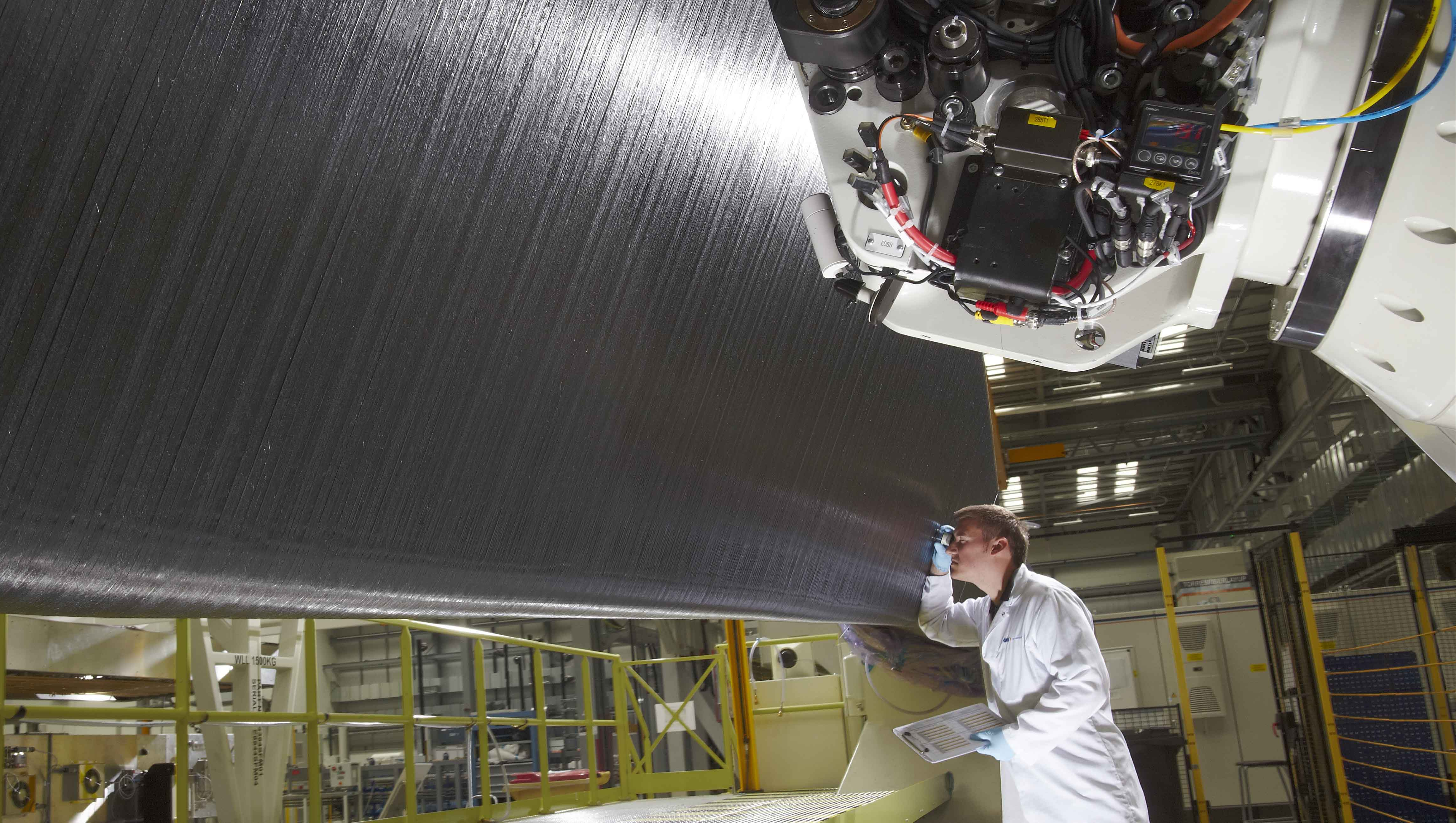The University of Bath is part of a new £6.9 million project to address significant barriers in the design and manufacture of future composite aero structures.
The ‘Certification for Design: Reshaping the Testing Pyramid (CerTest)’ project, is being led by the University of Southampton alongside the universities of Bath, Bristol and Exeter as well as industry partners, and is funded by the Engineering and Physical Sciences Research Council (EPSRC).
The five year project will look to enable more structurally efficient and lightweight airframes that are essential for meeting future fuel and cost efficiency challenges, to maintain and enhance the UK’s international position in the aerospace industry.
Maximising advanced composite aero structures is restricted by current test, simulation and certification approaches. However, this new project will seek to overcome this hurdle by addressing the challenges that are preventing step-changes in future engineering design by reshaping the so-called ‘testing pyramid’, which is the backbone of current validation and certification processes.
At Bath, the research team is led by Professor Richard Butler and Dr Andy Rhead in the Department of Mechanical Engineering, and Dr Karim Anaya-Izquierdo and Professor Rob Scheichl in the Department of Mathematical Sciences. Bath will lead research in the area of multiscale numerical modelling whilst contributing to innovations in structural testing, non-destructive testing and statistical methods.
Professor of Aerospace Composites at the University of Bath and GKN/Royal Academy of Engineering Research Chair, Richard Butler, who is leading the Bath team, said:
The programme brings together experts in engineering, applied mathematics and statistics to address a challenge of crucial importance to future aircraft and other lightweight composite products. This alliance of regional universities and major industrial players is vital for the step change in efficiency and sustainability we need.
Models which predict micron-scale damage within large aircraft parts and account for variations – both in manufacture and operation - are only possible using high-performance computer codes running over many hundreds of CPUs. The groundwork for these codes has been done by researchers at Bath and Exeter over the last few years.
Project lead and Professor of structures and materials at the University of Southampton, Ole Thomsen, added: “This funding is essential to enable continued growth of the UK aerospace industry and take economic benefits from the opportunities inherent in the move towards more sustainable aviation, as it fills a knowledge gap, where there is no equivalent capability in the UK or internationally.
“Using world class expertise, this programme grant from EPSRC will enhance the UK position in the technical revolution that embraces new materials and processes, by addressing an urgent need in aero structures design.” The Aerospace Technology Institute (ATI) Technology Strategy and Roadmaps highlights a clear need for continuing improvement in aircraft efficiency, which will require step changes in performance, such as to enable moving to hybrid-electric powertrains and all-electric aircraft.
These transformative technologies will impact every aspect of the aerospace industry, but will specifically set very challenging targets in terms of the mass of aero structures and new aero-structural forms as the industry transitions to blended wing body aircraft, electric propulsion and other advanced concepts.
Moreover, the project will provide PhD/EngD graduates with unique and world-leading competence in testing, modelling and qualification as well as certification of advanced composite aero structures.

